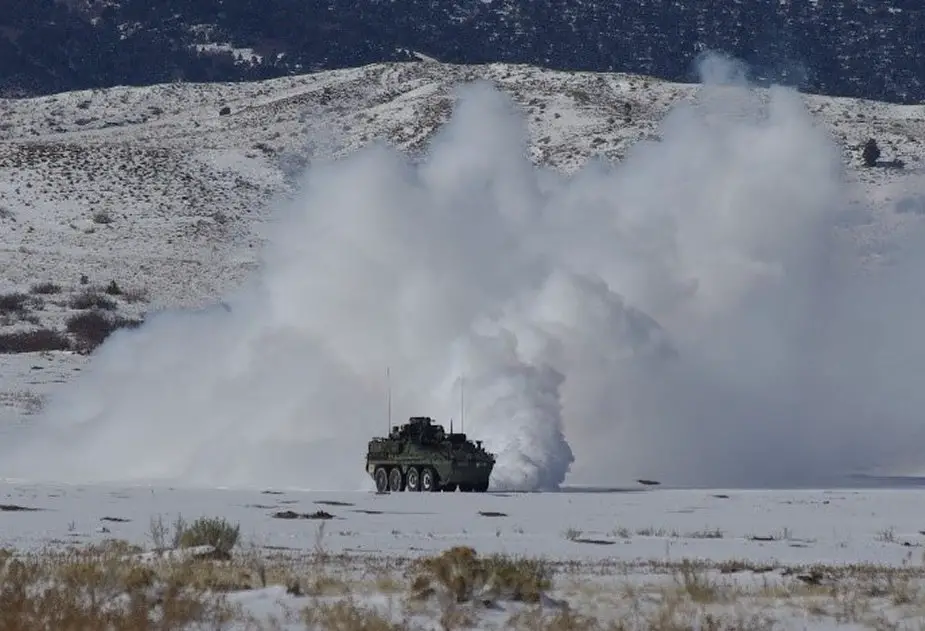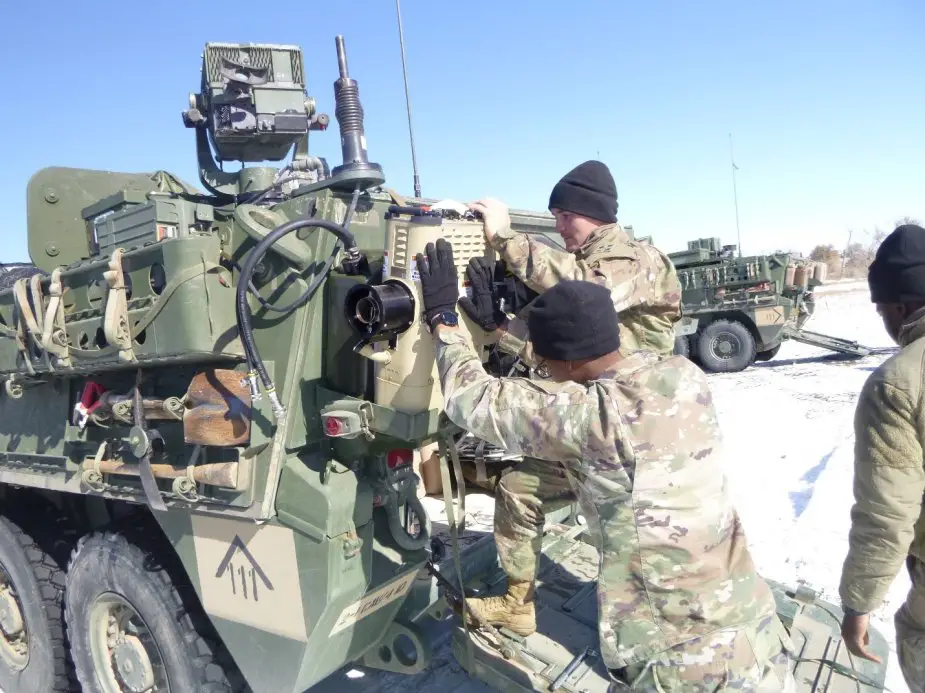4th Infantry Division soldiers recently finished the final phases of testing a new battlefield smoke-producing system to conceal units during combat at Fort Carson, Colorado. Capt. Christopher Biddie, Test Officer, U.S. Army Operational Test Command, reports.

During operational testing at Fort Carson, the Screen Obscuration Module (SOM) lays a plume of smoke to conceal troops maneuvering on the battlefield (Picture source: Capt. Christopher Biddie, Test Officer, U.S. Army Operational Test Command)
The Screen Obscuration Module (SOM), which can be mounted to any vehicle or used dismounted, produces a billow of smoke capable of obscuring a platoon's movement. Currently the U.S. Army uses the M8 smoke pot or the M56 Coyote smoke generator to produce smoke. The SOM covers the gap between these pieces of equipment, producing more smoke than the M8 while easily configurable to any mobile platform in the Army's inventory, according to Maj. Jessie Holmes a test officer with the U.S. Army Operational Test Command's Maneuver Support and Sustainment Test Directorate.
During the test, soldiers from A Troop, 2nd Squadron, 1st Cavalry Regiment, 1st Stryker Brigade Combat Team, 4th Infantry Division, employed the SOM platform in multiple configurations. "Each soldier learned the features and capabilities of the SOM through hands-on training and practical exercises during New Equipment Training of the SOM over the course of a beautiful autumn week at Fort. Carson," said Holmes.
The weather had other plans for testing and after blanketing the Coloradan plains with six inches of snow, the Soldiers from Apache Troop ran the SOM through its paces. Using SOMs mounted on Strykers, the soldiers conducted a series of mock engagements. Smoke covered the training area as the two teams vied for advantage on the battlefield. "We had to adjust some of our tactics, but the smoke was actually really useful once we learned how to use it to our advantage," said Pfc. Tyler Johnston, an assistant gunner in Apache Troop.
About the U.S. Army Operational Test Command
As the Army's only independent operational tester, OTC tests Army, joint, and multi-service warfighting systems in realistic operational environments, using representative soldiers to determine whether a system is effective, suitable, and survivable. Public law requires OTC to test major systems before they are fielded to its ultimate customer, the American Soldier.
The Maneuver Support and Sustainment Test Directorate at Fort Hood, Texas, conducts operational tests of combat engineer, chemical, transportation, military police, quartermaster, ordnance and medical service systems in order to provide our senior leaders with the necessary information to field the highest quality equipment for the warfighter.

Soldiers from A Troop, 2nd Squadron 1st Cavalry Regiment, 1st Stryker Brigade Combat Team, 4th Infantry Division, work with the Screen Obscuration Module (SOM) (Picture source: Capt. Christopher Biddie, Test Officer, U.S. Army Operational Test Command)














